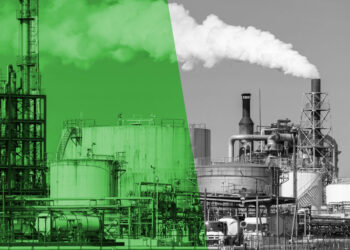Have you ever wondered where the shoes you are wearing are from? Or how about the food you have eaten today? If the answer is no, do you recall teachers and professors passionately telling us all about logistics? Most students, at one point in their educational career, have visited a company or factory just to take a look behind the scenes.
When you take a deeper look into your favourite company that offers goods, you will rapidly realise that the good consists of different materials. A sneaker from Nike, for example, consists of some fabric, a lace and a sole. However, if we had to take an even deeper look into it, we would realise that the sneaker actually consists of some raw materials. The six most common (raw) materials to be found in the shoes are polyester, textiles, leather, rubber, (EVA) foam and cotton. These materials are mainly from Asian countries such as China, India, Turkey, Thailand, Malaysia and Indonesia. For these materials to then turn into an actual sneaker, it generally takes machine work.
Who does manufacturing?
Though Nike was founded in the USA, its sneakers are mainly manufactured in factories all over Asia and Europe. The sneakers are eventually put together, and therefore, made by machines. Ever wondered what the large/industrial machines outside of the factories are for? Well, when it comes to the shoes of Nike, among others, needed are stitching, stamping and healing machines. Nike also offers accessories. For some accessories industrial dryers are needed. Other brands and companies may use industrial ovens and/or other machines. For more information on industrial machines, visit https://procesni.com/.
However, people help in the manufacturing process too. Along with the machines, people are needed to supervise over the process. The employees of the factory work there at the same time to ensure that the machines do their work correctly. Eventually, each step in the manufacturing process adds value to the materials.
From transportation to delivery of your order
After the process of turning the raw materials into shoes, the shoes need to get packed. The packaging process could happen at the same or at another location/factory. In the latter case, the shoes get transported in bulk to the new location. Fast forward to the finalized shoes, they get distributed to various warehouses of Nike all over the world. As a customer, when you place an order it will get confirmed first. After the confirmation of the order, the shipping/delivery process starts. This is the last process before the customers receive the ordered shoe. The next time there is a delay in your order, make sure you realise the amount of processes your order has gone through to get to you on time.















